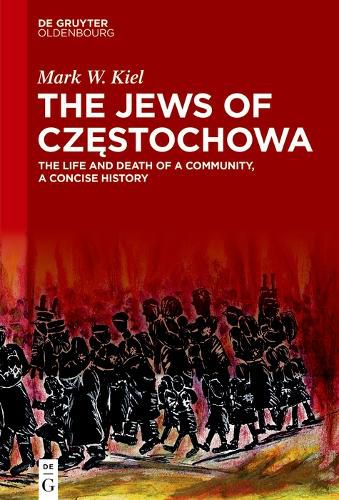Readings Newsletter
Become a Readings Member to make your shopping experience even easier.
Sign in or sign up for free!
You’re not far away from qualifying for FREE standard shipping within Australia
You’ve qualified for FREE standard shipping within Australia
The cart is loading…






This title is printed to order. This book may have been self-published. If so, we cannot guarantee the quality of the content. In the main most books will have gone through the editing process however some may not. We therefore suggest that you be aware of this before ordering this book. If in doubt check either the author or publisher’s details as we are unable to accept any returns unless they are faulty. Please contact us if you have any questions.
Czestochowa was the home of the eighth largest Jewish community in Poland. After 1765, when there were 75 Jews in Czestochowa, the community grew steadily. With emancipation in 1862, many Jews migrated to Czestochowa and contributed to its industrial and commercial growth. In 1935, there were 27,162 Jews out of a total population of 127,504. When the Nazis deported Jews to Czestochowa to work in its munition factories, the Jewish population exceeded 50,000. Almost all perished in Treblinka.
Anti-Jewish feeling was spurred on by the Church and Fascist groups that organized boycotts of Jewish stores and incited pogroms intended to drive the Jews out of the city.
The Jewish labor movement fought unemployment and poor working conditions. Impoverished families were aided by community charitable funds. Jewish philanthropists established the non-sectarian Jewish Hospital, progressive schools, two gymnasia and the New Synagogue.
During election seasons, the entire Jewish political spectrum, from the socialist parties to the ultra-Orthodox, competed in the self-governing body, and in the Municipal Council.
By 1901, stylishly dressed men and women mixed in the streets with poor religious Jews in their traditional garb. A popular press, libraries, theaters, cinema, sporting events and youth movements gave Czestochowa Jews a variety of cultural choices to suit their politics, artistic taste, and modes of leisure. Public life transformed a dreary factory town into one of the most colorful and celebrated Jewish communities in Poland before and after the First World War.
$9.00 standard shipping within Australia
FREE standard shipping within Australia for orders over $100.00
Express & International shipping calculated at checkout
This title is printed to order. This book may have been self-published. If so, we cannot guarantee the quality of the content. In the main most books will have gone through the editing process however some may not. We therefore suggest that you be aware of this before ordering this book. If in doubt check either the author or publisher’s details as we are unable to accept any returns unless they are faulty. Please contact us if you have any questions.
Czestochowa was the home of the eighth largest Jewish community in Poland. After 1765, when there were 75 Jews in Czestochowa, the community grew steadily. With emancipation in 1862, many Jews migrated to Czestochowa and contributed to its industrial and commercial growth. In 1935, there were 27,162 Jews out of a total population of 127,504. When the Nazis deported Jews to Czestochowa to work in its munition factories, the Jewish population exceeded 50,000. Almost all perished in Treblinka.
Anti-Jewish feeling was spurred on by the Church and Fascist groups that organized boycotts of Jewish stores and incited pogroms intended to drive the Jews out of the city.
The Jewish labor movement fought unemployment and poor working conditions. Impoverished families were aided by community charitable funds. Jewish philanthropists established the non-sectarian Jewish Hospital, progressive schools, two gymnasia and the New Synagogue.
During election seasons, the entire Jewish political spectrum, from the socialist parties to the ultra-Orthodox, competed in the self-governing body, and in the Municipal Council.
By 1901, stylishly dressed men and women mixed in the streets with poor religious Jews in their traditional garb. A popular press, libraries, theaters, cinema, sporting events and youth movements gave Czestochowa Jews a variety of cultural choices to suit their politics, artistic taste, and modes of leisure. Public life transformed a dreary factory town into one of the most colorful and celebrated Jewish communities in Poland before and after the First World War.